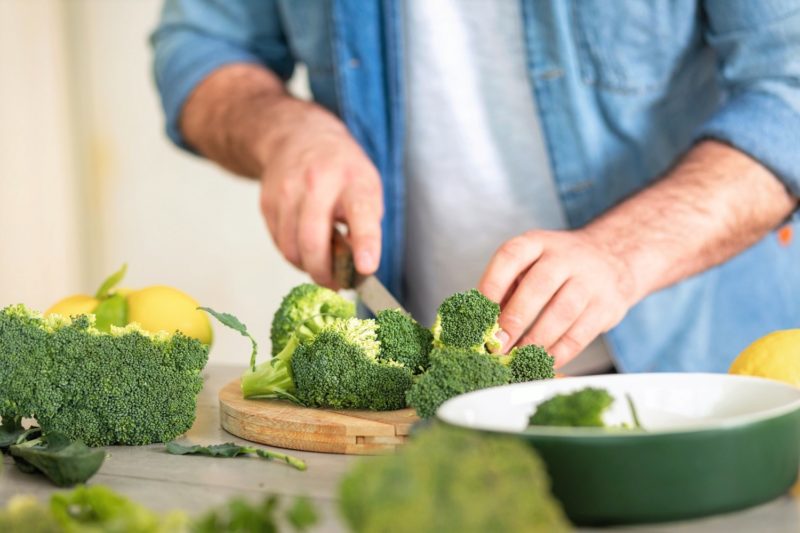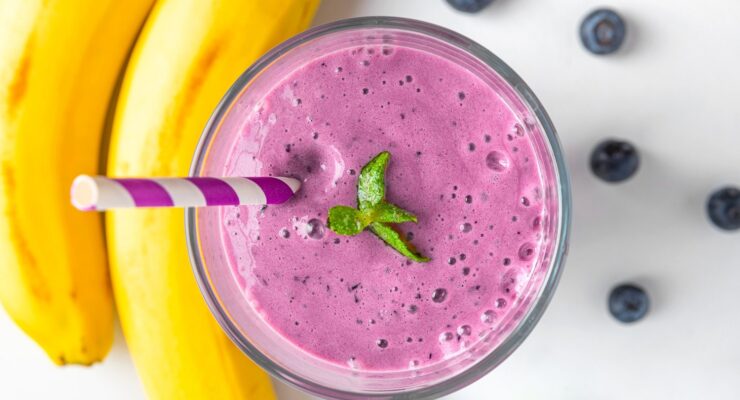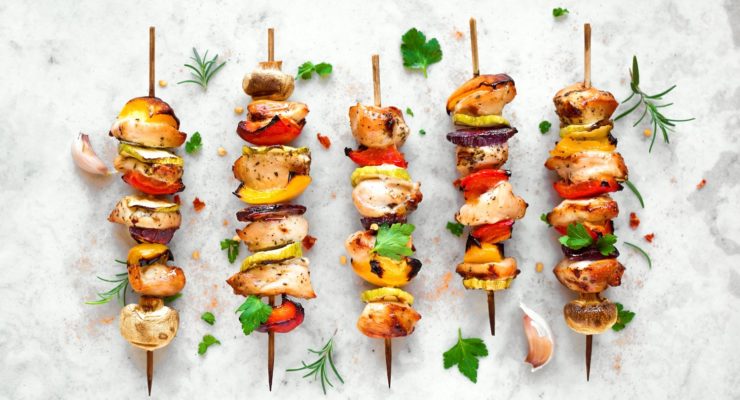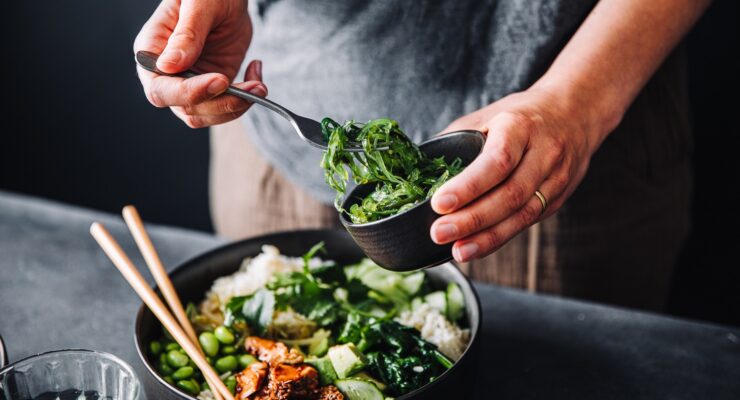6 Healthy Foods That Help Boost Testosterone
Article posted in: Diet & Nutrition
Almost 40 percent of men over the age of 45 have low—or lowered—testosterone levels. This doesn’t mean you’re “less of a man,” but it can have some serious complications for your health.
Effects of Low Testosterone Levels
Do you know how to recognize the signs of low testosterone?
Men with lower testosterone can suffer from lower libido, erectile dysfunction, depressed mood, difficulties with concentration or memory, fatigue and loss of muscular strength. Reduced testosterone can also put you at higher risks for certain diseases, including neurodegenerative diseases like Alzheimer’s disease and coronary artery calcification.
And if you’re trying to lose weight, reduced testosterone levels can make things harder. Lower testosterone levels can mean you’re more tired, which can mean less energy to exercise. A reduction in this key male hormone can also result in increased body fat. All of these symptoms can contribute to depression or anxiety.
You may note certain lifestyle factors contributing to your decreased testosterone. Relationship problems, overworking, or other stress factors can reduce testosterone.
How to Increase Testosterone and Feel Better
You can’t completely stop your testosterone numbers from slipping. The amount of testosterone in your body naturally declines as you age.
But as we’ve already touched on, a dip in testosterone has also been found to be associated with lifestyle issues. Sleeping less than five hours per night, skipping exercise, and gaining fat around your middle can all contribute to lower T levels.
Research shows that an unhealthy diet and the presence of diabetes and high blood pressure is “significantly associated” with lower free testosterone levels. Low testosterone levels are also linked to obesity and metabolic syndrome (a cluster of symptoms, including high blood pressure, high blood sugar, unhealthy cholesterol levels and belly fat).
Another way to boost testosterone? Adding these six foods to your healthy diet. Each contains a testosterone-boosting nutrient or two; and they all can easily fit into your Nutrisystem plan.
1. Get more zinc with a serving of lean beef.

If you’re low on zinc, you’re probably low on testosterone. When scientists reduced the amount of this nutrient in the diets of study participants, the testosterone levels in their bloodstream fell. This wasn’t a huge surprise—zinc deficiency is already associated with reduced sperm quality, a sign of testosterone problems.
So how do you get more zinc? The most zinc-heavy food out there is oysters; but for an ingredient that’s easier to incorporate into your daily diet, just eat meat. Chicken thighs, lean beef and pork chops are all great sources of zinc, with the burger coming out on top.
A three-ounce beef patty has just about half of your daily allowance of zinc. On Nutrisystem, that serving is equal to 1.5 PowerFuels.
2. Eat (a little) more fat: Use coconut oil.

Low-fat diets could also be called low-testosterone diets: When men have less than 20 percent of their calories from fat, their T levels are lower.
That doesn’t mean you should pile on the fries. Processed foods and trans fats have been found to lower your testosterone even more. Eating too many saturated fats is associated with increases in LDL, or the “bad” type of cholesterol.
Enter coconut oil: More than half the fat in this tropical oil come from medium-chain triglycerides, or MCTs. These fats have been shown to block an enzyme that turns testosterone into another hormone, dihydrotestosterone. Also called DHT, this hormone can contribute to hair loss.
We’re not saying coconut oil is a magic bullet for thinning hair or low T—in studies, it hasn’t yet been proven for either. But increasing your intake of healthy fats can keep your testosterone from slipping … and the potential for a bushier mane doesn’t hurt!
One teaspoon of coconut oil counts as one Extra on Nutrisystem—and is a great, flavor-boosting coating for roasted chicken or sweet potatoes, or a filling bonus for your morning oatmeal.
3. Get some selenium from the sea—with tuna!

Selenium is a nutrient that plays a critical role in your metabolism and protection from infection—and it’s also been shown to be effective in increasing sperm quality, which is associated with increased T.
Brazil nuts are the undisputed king of selenium. However, like any nut, they’re easy to overeat. If you have trouble stopping after the recommended serving size, try to get this vital nutrient from tuna instead. A two-ounce serving of yellowfin has more than 100 percent of your daily selenium needs. Other fish—like canned sardines, shrimp and halibut—are also potent sources of selenium.
That tuna could be best for your weight loss plan, though: On Nutrisystem, a two-ounce serving of fatty fish (like tuna) is just one PowerFuel.
4. Make your testosterone incredible: Eat some eggs.

In a 2021study, scientists gave one group of young men whole eggs after training while another group received just egg whites. Both groups were consuming the same amount of protein, but the first group had yolks. After 12 weeks, the men who ate the egg yolks had lower body fat percentages, more lean muscle and more testosterone than the egg white-only group. Talk about incredible!
The great news: Everyone knows how to cook an egg! One large egg is the perfect complement for your Nutrisystem Honey Wheat Bagel at breakfast, and it counts as one PowerFuel.
5. Have two cups of coffee—but not more!

When scientists gave pro rugby players caffeine an hour before their workouts, the athletes were wired—and their testosterone increased by 21 percent during exercise. That effect doesn’t last—it’s an acute increase in free testosterone. But it can help you build lean muscle during that time, which can reduce your body fat—which will, in turn, boost your testosterone levels in the long run.
If you want this effect during your workout, though, don’t go overboard: The increased T effect is counteracted by an increase in a different hormone, cortisol, if you have too much caffeine in your system. Stick with 200 to 400 milligrams—about as much as you’ll get from two cups of strong coffee. (And if you take your coffee without sugar or milk, it’s a Free Food on Nutrisystem!)
6. Fight against estrogen to boost your T with some broccoli.

What does estrogen have to do with testosterone? When you have lower levels of estrogen, you’ve got higher levels of T—and cruciferous vegetables, like broccoli, can indirectly improve your T levels by pushing estrogen out.
That’s because broccoli and other cruciferous veggies—like cabbage and cauliflower—have a compound called indole-3-carbinol (I3C) which slows your body from making more estrogen and actually helps it break down any estrogen that’s floating around. I3C makes your body produce less estrogen and get rid of more of it in your urine. The result: higher testosterone levels in your body.
Broccoli can also help you lose weight to boost your T because it’s a non-starchy vegetable—these vitamin-rich veggies help fill you up with minimal calories. Nutrisystem members are encouraged to eat four servings of them per day. You can actually eat as much broccoli as you want—it’s unlimited on Nutrisystem plans. But if you prefer it as a side with some other flavors involved, try this recipe for Broccoli Slaw with Cranberries and Lime—it counts as one Vegetable and one SmartCarb on Nutrisystem.






